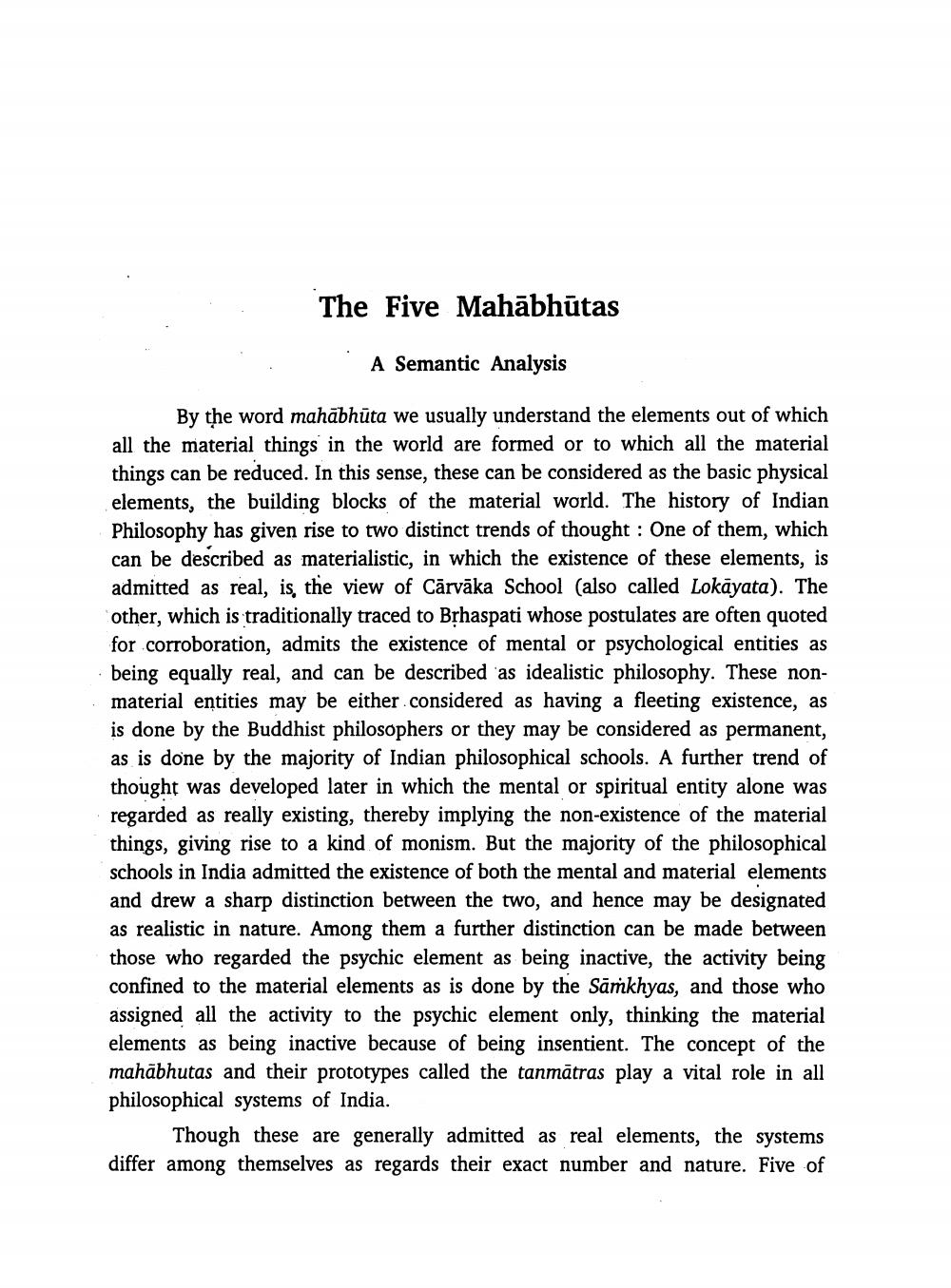________________
The Five Mahābhūtas
A Semantic Analysis
By the word mahābhūta we usually understand the elements out of which all the material things in the world are formed or to which all the material things can be reduced. In this sense, these can be considered as the basic physical elements, the building blocks of the material world. The history of Indian Philosophy has given rise to two distinct trends of thought : One of them, which can be described as materialistic, in which the existence of these elements, is admitted as real, is, the view of Cārvāka School (also called Lokāyata). The other, which is traditionally traced to Brhaspati whose postulates are often quoted for corroboration, admits the existence of mental or psychological entities as being equally real, and can be described as idealistic philosophy. These nonmaterial entities may be either considered as having a fleeting existence, as is done by the Buddhist philosophers or they may be considered as permanent, as is done by the majority of Indian philosophical schools. A further trend of thought was developed later in which the mental or spiritual entity alone was regarded as really existing, thereby implying the non-existence of the material things, giving rise to a kind of monism. But the majority of the philosophical schools in India admitted the existence of both the mental and material elements and drew a sharp distinction between the two, and hence may be designated as realistic in nature. Among them a further distinction can be made between those who regarded the psychic element as being inactive, the activity being confined to the material elements as is done by the Sāṁkhyas, and those who assigned all the activity to the psychic element only, thinking the material elements as being inactive because of being insentient. The concept of the mahābhutas and their prototypes called the tanmātras play a vital role in all philosophical systems of India.
Though these are generally admitted as real elements, the systems differ among themselves as regards their exact number and nature. Five of




